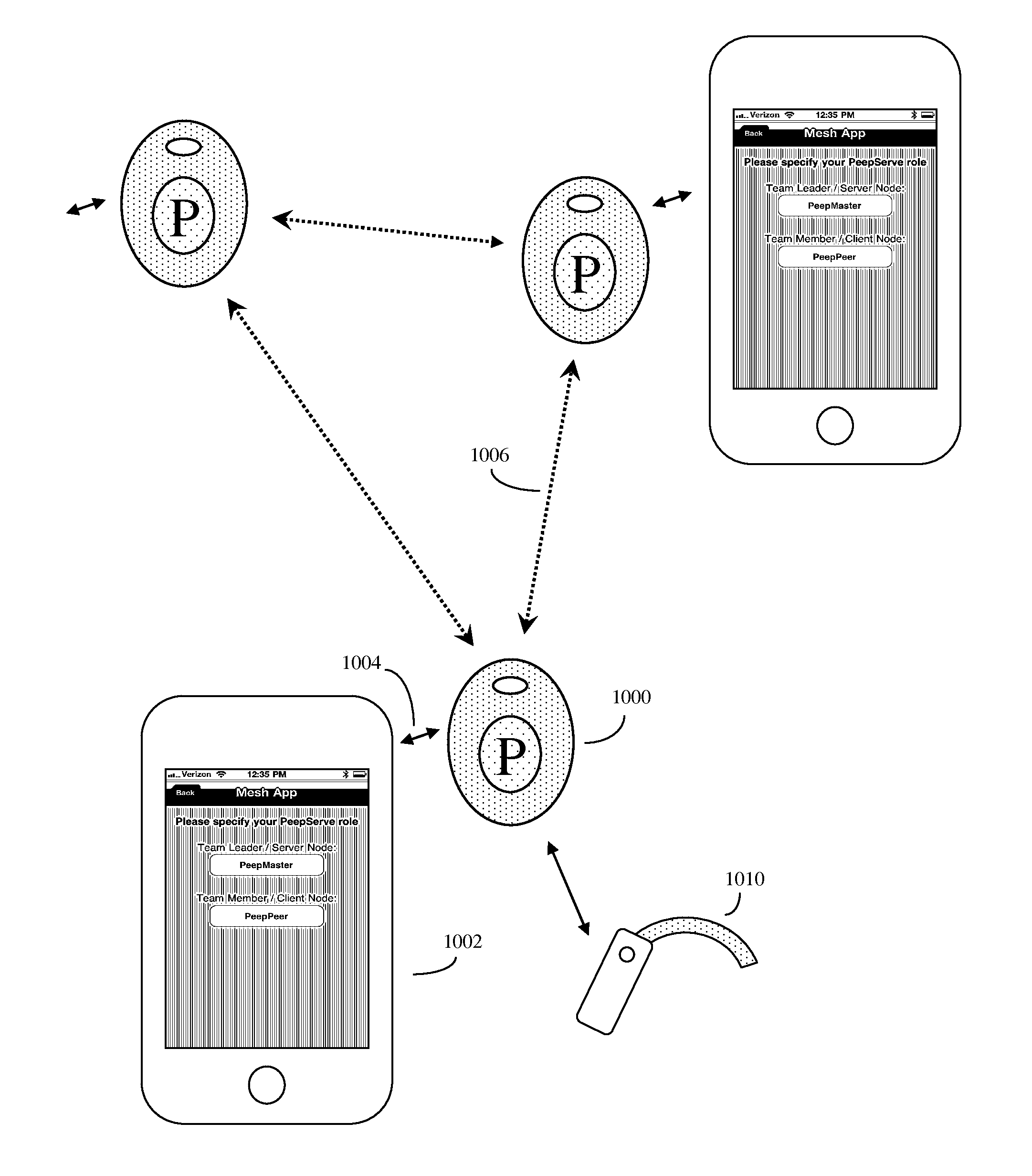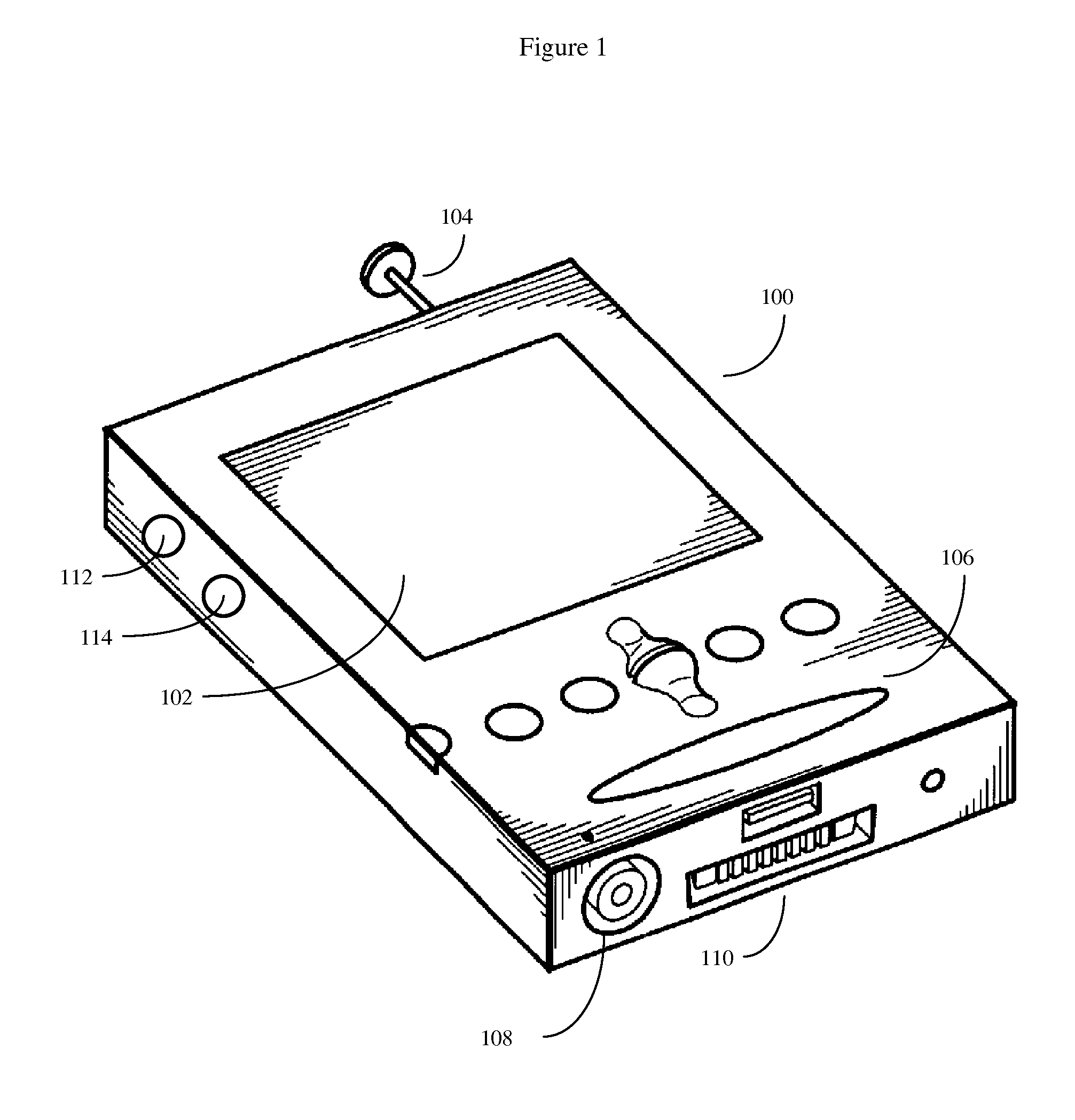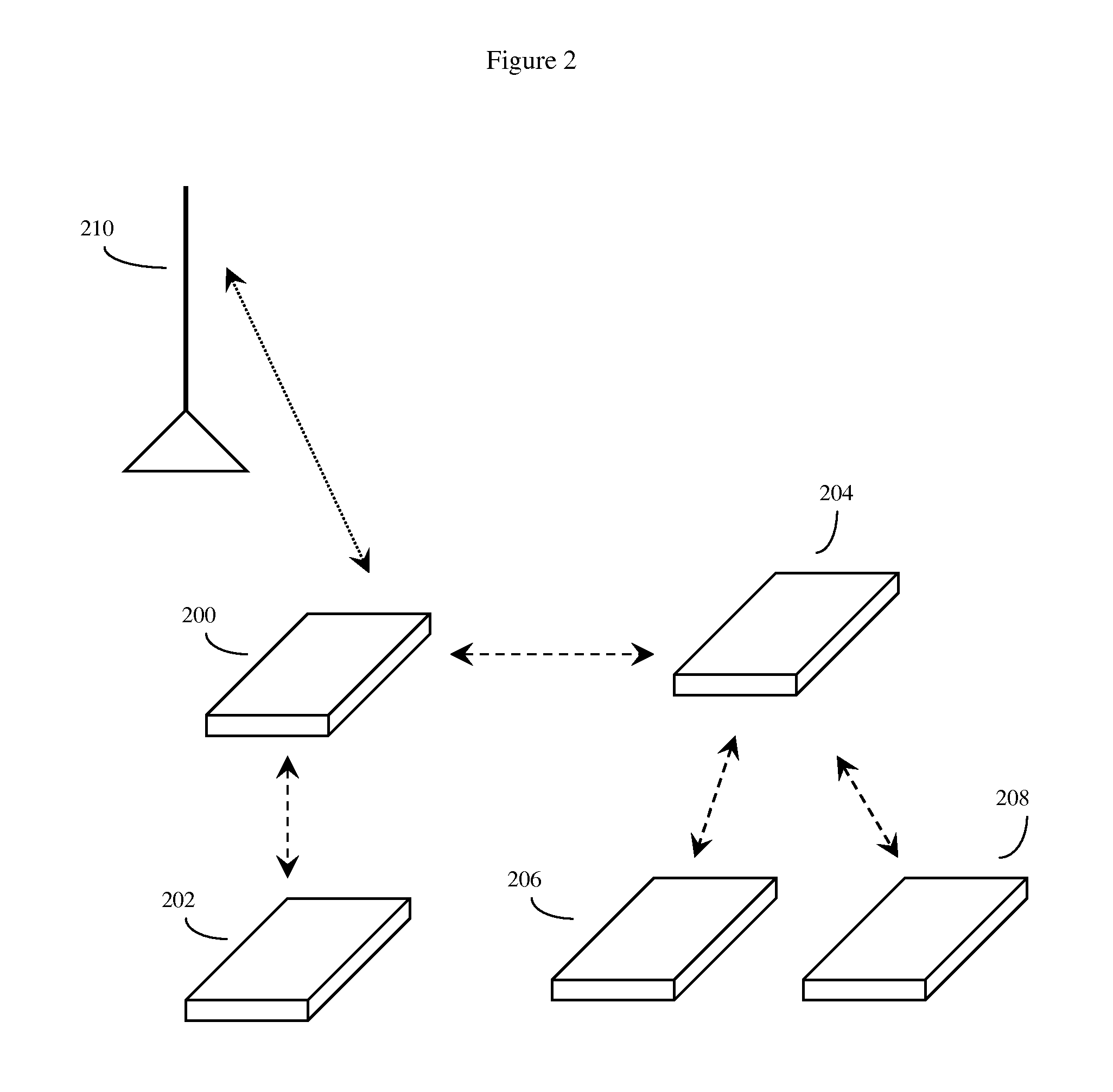Mobile multi-network communications device
a multi-network communication and mobile technology, applied in the field of wireless communication technology, can solve the problems of imposing costs on the cellular phone user, limiting data transfer rates, and dropping calls, and achieve the effects of extending the range of optical links, extending the size and data carrying capacity of peer-to-peer networks, and extending the range of wireless or optical peer-to-peer links
- Summary
- Abstract
- Description
- Claims
- Application Information
AI Technical Summary
Benefits of technology
Problems solved by technology
Method used
Image
Examples
example
[0073]To illustrate some of the inventions mixed optical and wireless peer-to-peer concepts, an Apple iPhone App, entitled Democri-C, was encoded and published on the Apple App store. The non-commercial version of this software runs on standard Apple iPhones, such as the iPhone 4.
[0074]FIG. 7 shows a startup screen (700) from this “Democri-C” application which enables communications in both wireless mesh or peer-to-peer mode, as well as in a backup optical mode. In this example, the user is prompted to select either optical mode (702) or wireless mode (704), however in an alternative embodiment, wireless peer-to-peer mode may be enabled by default, and the user will only select optical mode when there is a need to further supplement the connectivity of the wireless mode.
[0075]FIG. 8 shows the backup optical data transmission mode for the example Democri-C iPhone App. In this simple example, data is transmitted using standard Morse code, at various user selected speeds (802), and no ...
PUM
 Login to View More
Login to View More Abstract
Description
Claims
Application Information
 Login to View More
Login to View More - R&D
- Intellectual Property
- Life Sciences
- Materials
- Tech Scout
- Unparalleled Data Quality
- Higher Quality Content
- 60% Fewer Hallucinations
Browse by: Latest US Patents, China's latest patents, Technical Efficacy Thesaurus, Application Domain, Technology Topic, Popular Technical Reports.
© 2025 PatSnap. All rights reserved.Legal|Privacy policy|Modern Slavery Act Transparency Statement|Sitemap|About US| Contact US: help@patsnap.com



